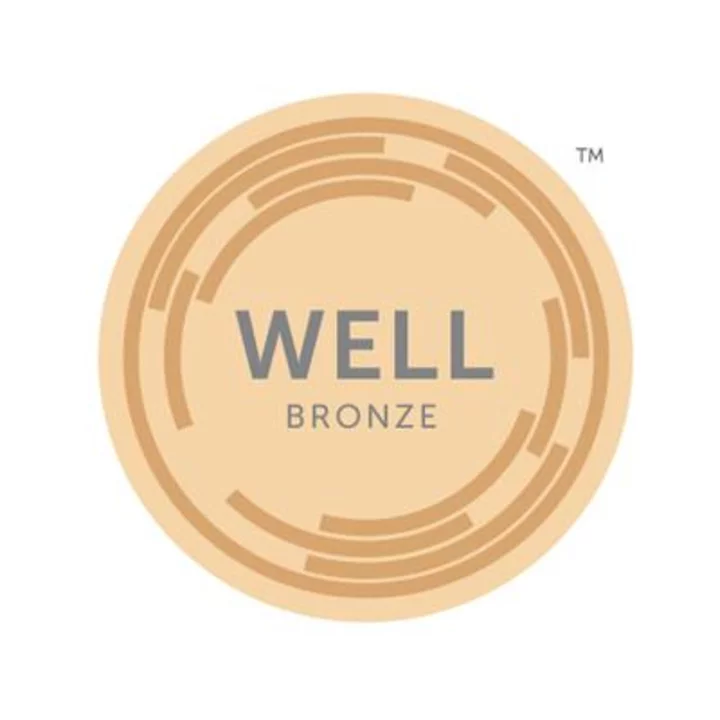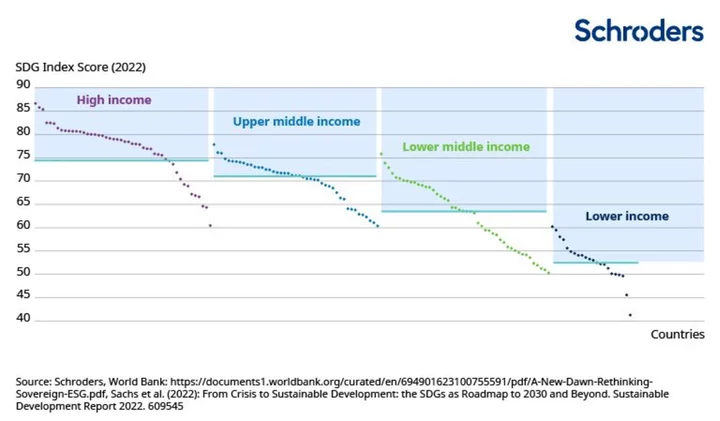The Sony FE 20-70mm F4 G ($1,099.99) starts at a wider angle than nearly any other standard zoom lens, a difference-maker for creators who enjoy landscapes and architecture subjects, but it still reaches the 70mm mark for tighter crops. Its speedy autofocus performance, excellent image quality, useful macro capability, and sturdy design are also all strong points in its favor. The Sigma 24-70mm F2.8 DG DN Art remains a good option if you often use your camera in dim light, but we think the FE 20-70mm F4 G's wider coverage is more valuable overall, so it earns a higher rating and our Editors' Choice award.
An Ambitious Design
Sony is actually the second to market with a full-frame zoom that starts at 20mm and still covers a standard range. Creators who use L-mount gear have had access to the Panasonic Lumix S 20-60mm F3.5-5.6 for a few years now, a lens I recommend just as highly for owners of a Leica, Panasonic, or Sigma mirrorless camera.
(Credit: Jim Fisher)As much as I like the Lumix, the FE 20-70mm F4 G is even more ambitious. Its constant aperture and extra zoom power call for a more complex optical formula with 16 elements in 13 groups. Despite this, the 20-70mm is relatively small at about 3.9 by 3.1 inches (HD) and 1.1 pounds. It's bigger than the Lumix 20-60mm (3.4 by 3.1 inches, 12.4 ounces), but not hugely so. Like most standard zooms, the 20-70mm telescopes outward (1.5 inches in this case) to get to 70mm.
Although it's interesting to compare the FE 20-70mm to a similar lens from another system, L-mount lenses don't work with Sony cameras. If you're mulling a new first-party lens for your a7 series body, you might also consider the FE 24-105mm F4 G OSS or the premium FE 24-70mm F2.8 GM II. You might also spot the older Sony Zeiss Vario-Tessar T* 24-70mm F4 OSS at a discount, but I don't endorse that 2014 lens because it's not on par with fresher releases. Primarily, its focus motors are primitive and its optical formula is prone to show false colors in backgrounds.
(Credit: Jim Fisher)Third-party manufacturers offer worthwhile alternatives—the Sigma 24-70mm F2.8 DG DN Art and 28-70mm F2.8 Contemporary, along with the Tamron 28-75mm F2.8 G2, are all excellent value picks.
The difference between 20mm and 24mm might not sound that big, but angle of view shifts more dramatically at shorter focal lengths than at longer ones. At 20mm the diagonal angle of view is around 94.5 degrees, versus 84.1 degrees at 24mm.
For me, having this extra wide-angle coverage in a zoom is useful for natural landscapes and urban exploration alike, as it helps you add a sense of space to compositions. I'll gladly trade it for zoom power at the other end of the scale, as it's always possible to crop a photo after you've snapped it.
a7CR, 20mm, f/8, 1/200-second, ISO 100 (Credit: Jim Fisher)And it doesn't take much of a crop to make up the difference between the FE 20-70mm zoomed-in view and that of the FE 24-105mm F4 OSS. The difference in angle of view is nearly the same as at the wide angle, around 11 degrees. Everyone places their own value on field of view. I think wider coverage is more important for an everyday lens, but reasonable people may disagree.
G-Series Construction
Sony places its premium lenses into two lineups: G lenses cover the mid-tier and G Master (GM) lenses cater to pros. Despite its G branding, however, the FE 20-70mm is built just as well as recent GM options. It has dust and splash protection, an anti-smudge fluorine coating on the exposed glass, and ample on-barrel controls. You don't get the zippered soft case like with a GM zoom, but Sony includes front and rear caps, a hood, and a drawstring bag. For reference, the lens supports 72mm front filters.
(Credit: Jim Fisher)The zoom and manual focus rings on the barrel are rubberized, so they are easy to grip even if you are wearing gloves. An aperture ring adds a bit of hands-on control. It goes from f/4 to f/22 either with third-stop clicks or smooth, silent adjustments, depending on which mode you select from a nearby Click switch. If you prefer to use camera dials to set the f-stop, turn the ring to the A position. The nearby Iris Lock switch prevents you from accidentally moving aperture control between the camera body and the lens.
(Credit: Jim Fisher)The AF/MF toggle and a pair of function buttons sit mid-barrel between the focus and zoom rings. The buttons are 90 degrees apart and always handle the same, customizable function. They perform AF Lock by default, but it's easy enough to change them to handle AF-ON or another function via the camera menu. The advantage of having both is that one is always accessible regardless of whether you are holding the camera in landscape or portrait orientation.
a7CR, 26mm, f/8, 1/30-second, ISO 160 (Credit: Jim Fisher)The autofocus works swiftly on every camera I tried, including the a7C II, a7CR, and a7R IV. Dual XD linear motors drive a single focus group for speedy performance, though minor focus breathing is visible at the wide end of the range. Specifically, the frame is a little bit broader at 20mm when you focus on a close subject rather than a distant one. That's not a major concern because newer Sony cameras, including the ZV-E1 vlogging specialist, offer breathing compensation for this lens. It is something to note if you use an older model for video, however.
The manual focus experience is decent, but the ring turns freely without as much resistance as I prefer. The linear focus throw is a little narrow too, especially at 70mm, so it's tricky to make fine adjustments at this focal length. The focus is less touchy at 50mm and wider, so I had an easier time setting focus manually in that range. How much this matters depends on how often you plan to use manual focus. The FE 24-70mm F2.8 GM II offers a better manual experience but for twice the price.
a7CR, 70mm, f/4, 1/800-second, ISO 100 (Credit: Jim Fisher)Close-up focus is a strong point. The lens locks on as near as 9.8 inches throughout the entirety of the zoom range, good for macro-grade 1:2.6 magnification. This capability adds some utility for nature hikes and urban exploration, enough so that you don't need to bring along a dedicated macro for most subjects.
a7C II, 49mm, f/9, 1/2-second, ISO 100 (Credit: Jim Fisher)Optical stabilization isn't a part of the design, which isn't too surprising. The old Zeiss Vario-Tessar 24-70mm F4 OSS includes it, but it came out before Sony introduced in-body image stabilization. All of Sony's recent full-frame cameras (beginning with the a7 II) include sensor-based stabilization that generally works well, and I managed to get up to half-second shots when I paired this lens with the a7CR.
Sony FE 20-70mm F4 G: In the Lab
a7C II, 44mm, f/4, 1/60-second, ISO 125 (Credit: Jim Fisher)I used the 60MP a7R IV and Imatest software to check the 20-70mm F4 G's optical performance. The pair delivers good resolution (around 3,900 lines) at 20mm f/4, with sharp results at the center giving way to a bit of muddiness at the edges and corners. Landscape photogs should stop down between f/5.6-f/11 for clearer results (4,300-4,700 lines) across the frame.
The lens does a little bit better at 24mm and 35mm, showing a very good 4,200 lines wide-open and improving to the excellent range from f/5.6-f/11 (4,600-4,800 lines). I observed another slight uptick in clarity at 50mm with the wide-open score going up to the excellent range (4,500 lines). And finally, at 70mm and f/4, the lens shows outstanding detail (5,000 lines) from center to edge.
a7CR, 20mm, f/22, 1/30-second, ISO 1600 (Credit: Jim Fisher)Picture quality expectedly drops off from f/16-f/22 at all focal lengths. Light particles start to scatter as they pass through a very narrow opening, which makes for soft, blurred edges. You should keep the aperture at f/11 or wider for the clearest results, but stopping down to f/22 does get you decently crisp 18-point sunstars, an effect some landscape photographers chase.
Like most modern lenses, the FE 20-70mm relies on optical corrections to compensate for distortion and a vignette cast at f/4. If you use your camera in JPG mode, they work transparently—you see a distortion-free picture in both the viewfinder and on your storage card. If you opt for Raw capture, the in-camera view is still corrected, but you must use editing software to apply a profile that gets rid of bulging barrel distortion (between 20 and 24mm) and an inward pincushion curve (between 50 and 70mm). Adobe Lightroom Classic and Capture One both include a profile for the lens.
a7C II, 20mm, f/11, 1/2-second, ISO 100 (Credit: Jim Fisher)I couldn't spot any false color in sample photos. Tree branches, power lines, and other high-contrast subjects were free of ugly purple fringing, an effect of lateral chromatic aberration (CA). Likewise, I didn't see any purple or green casts in transitions between in-focus subjects and the background blur (otherwise known as longitudinal CA, or LoCa).
a7C II, 70mm, f/4, 1/250-second, ISO 100 (Credit: Jim Fisher)Bokeh quality is one area where the FE 20-70mm takes a back seat to the pricier FE 24-70mm F2.8 GM II. The F4 optics still provide plenty of blur, especially at 70mm, but defocused highlights show some onion skin texture and lose their round shape toward the edge of the frame at f/4. The GM II doesn't have these issues, but the differences are most apparent if there are bright specular highlights behind your subject.
(Credit: Jim Fisher)A Nearly Picture-Perfect Standard Zoom
The FE 20-70mm F4 G is the lens to get if you've always wanted a little bit more wide-angle coverage from your standard zoom, but find the short reach of alternatives like the FE PZ 16-35mm F4 too limiting. It's a nearly perfect zoom for trips out of the house, whether it be for a quick walk or an epic vacation thanks to its light carry weight, fantastic picture quality, and useful macro capabilities. It easily earns our Editors' Choice award for photo enthusiasts who want the most versatile everyday zoom for their full-frame a7 series camera. Pros and discerning enthusiasts should likely choose the FE 24-70mm F2.8 GM II for its low-light prowess, but for everyone else, the FE 20-70mm is the one to get.









